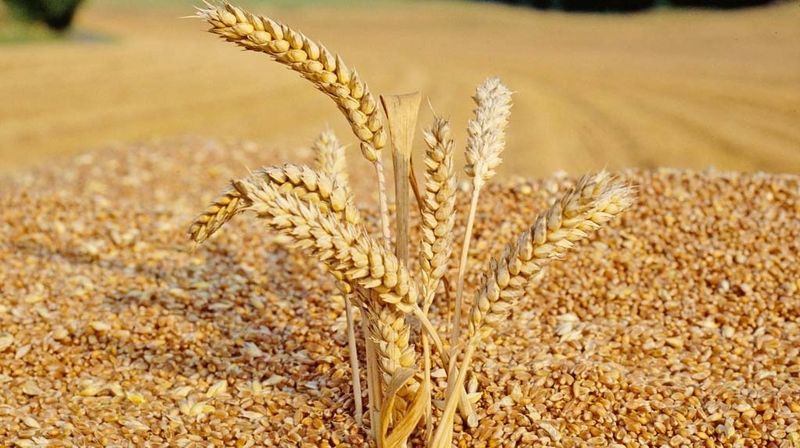Australia: Prices lift as dry creeps south

Wheat and barley have traded mostly higher this week as dry conditions move south in New South Wales to further limit grower selling.
Adding to the price rises is the weaker Australian dollar as small amounts of old crop are booked for shipment ahead of the wheat harvest which is about to start in Central Queensland.
In the north, more crops are being cut for hay as yield prospects slide and hay prices firm based on solid demand from feedlots, dairies and graziers.
In the south, light frost is forecast for some districts over the weekend, and yield and quality could be impacted as conditions start to dry out.
However, many crops across southern New South Wales, Victoria and South Australia have above-average yield potential, and will deliver if spring weather is favourable.
| Sep 7 | Aug 31 | New-crop | |
| Barley Downs | $465 | $457 | NQ |
| SFW wheat Downs | $475 | $464 | $474 up $3 |
| Sorghum Downs | $450 | $440 | NQ |
| Barley Melbourne | $365 | $365 | $370 dn $3 |
| ASW Melbourne | $405 | $400 | $410 dn $5 |
| SFW Melbourne | $400 | $395 | $405 unch |
Table 1: Indicative prices in Australian dollars per tonne.
Little to no rain fell in growing areas of Qld and NSW in the past week, and crops are maturing quickly in warm temperatures.
Robinson Grain trader Anthony Furse said nearby demand was mostly covered, and the market was now looking at the next quarter.
“Consumers are trying to get some cover on for Oct, Nov and Dec,” Mr Furse said.
While the plains west of Narrabri and Moree did not sow large areas intended for winter crop due to a lack of planting rain, crops south and west of the Pillaga Forest are now starting to feel the pinch.
“It’s getting warmer and drier in the south, and growers are easing up their selling.
“Dubbo to Moree is hurting a little bit more now than it was.”
Feedlots in Qld are full, and the local deficit is being filled by interstate barley shipped to Brisbane, or southern barley coming up by road.
Roughage is being sourced locally where possible, and handy prices are encouraging some growers with a feedlot close by to bale wheat and barley.
“Feedlots are choc-a-block, and plenty of crops are getting cut for hay now.”
On sorghum, ABARES this week released its initial estimate for the crop which will ideally be planted in coming weeks.
Because of dry conditions in Qld and northern NSW, ABARES pegs the crop at 1.5 million tonnes, down 39 percent from the 2022-23 crop.
“China’s been absent for a while, but they’re starting to realise there isn’t as much around as they might have thought.”
Woodside Commodities managing director Hamish Steele-Park said cottonseed prices were firm.
“With dry weather and grazier demand still underpinning values, we’re seeing no export demand at these prices,” Mr Steele-Park said.
Prompt cottonseed ex gin is trading at around $585/t in Moree and the Macquarie Valley, and $580 in southern NSW.
“New-crop Moree is around $500/t, so there’s a large price inverse in play between current crop and new-crop values.
“Irrigated plant is guaranteed but dryland is looking ominous unless major rain falls in the next two months; that would seem unlikely.”
Mr Steele-Park said the high price of lint would encourage cotton to be planted if soil moisture was adequate.
The forecast for south-eastern Australia weather in coming days points to light showers followed by light frosts, and growers are nervous the impact of the second will outweigh the benefit of the first.
“Southern NSW is looking pretty right at the moment, but the next week or two will test it out,” Key Agri Wagga-based broker Matt Noonan said.
Some crops have above-average yield potential, but very little moisture underneath them to set them up for spring.
“If we get 10-20mm in the next couple of weeks, the crop could be anything; there’s a big variance in how crops are looking.”
Mr Noonan said growers were very cautious about over committing on new crop with yield so hard to predict.
“Some growers are still selling bits and pieces of old crop, but new crop has slowed up.
“If you’re in a perceived higher-rainfall area, you might be more interested in selling, but until we see a good solid front come through with a general rain, I can’t see people taking the risk on selling forward.”
Read also
Wheat in Southern Brazil Impacted by Dry Weather and Frosts
Oilseed Industry. Leaders and Strategies in the Times of a Great Change
Black Sea & Danube Region: Oilseed and Vegoil Markets Within Ongoing Transfor...
Serbia. The drought will cause extremely high losses for farmers this year
2023/24 Safrinha Corn in Brazil 91% Harvested
Write to us
Our manager will contact you soon



